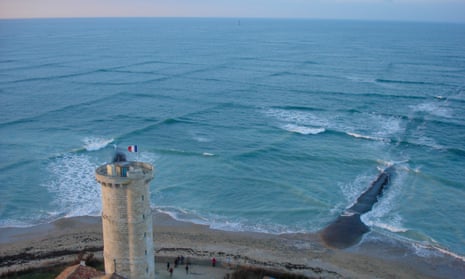There are warnings online about a peculiar square wave pattern. “If you swim in square waves your life is in danger,” says one video. “Get out of there immediately,” advises another. The pictures are real but the text is highly misleading.
The chessboard pattern of waves can be seen off the Île de Ré near La Rochelle in France. It is something of a tourist attraction, and visitors climb the lighthouse for a better view. The pattern is known as a cross sea, and occurs wherever where waves from different weather systems meet each other at right angles. The waves come from far out at sea, travelling for some distance without the wind that raised them.
Studies have found that a disproportionate number of accidents occur in cross seas. This appears to be because the combination of waves from two directions may produce severe rolling, causing a ship to take on water. However, the risk occurs with big cross waves out on the ocean. There is no suggestion that cross seas with small waves close to land are dangerous to small boats, surfers or swimmers.
Rip currents – genuinely dangerous currents that drag swimmers out to sea – are often not visible on the surface.

Comments (…)
Sign in or create your Guardian account to join the discussion